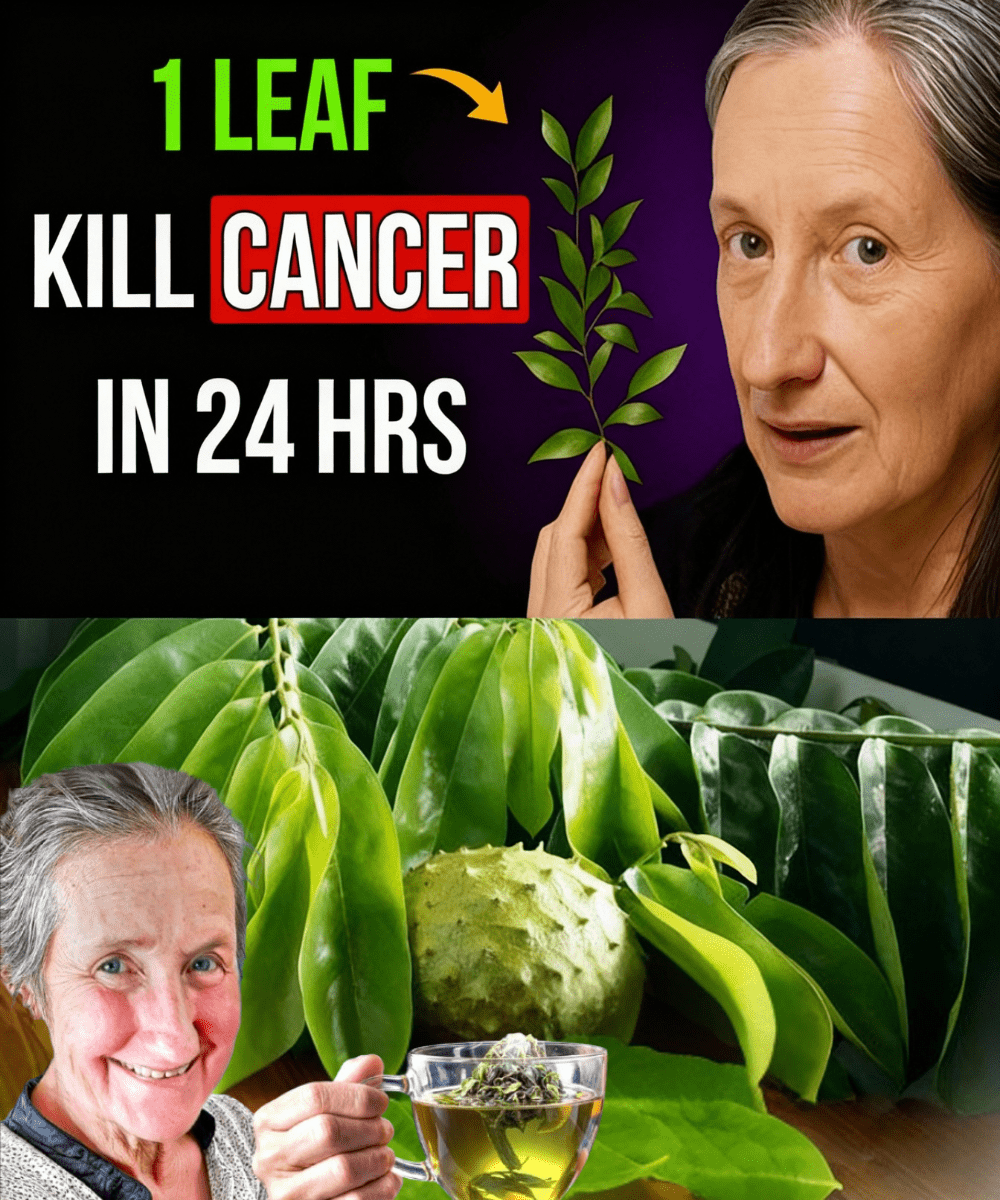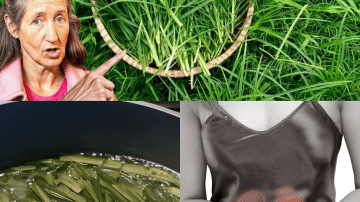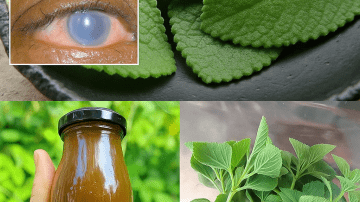Imagine the ultimate medical breakthrough—a simple, glossy green leaf from a tropical tree, holding the power to annihilate cancer cells within a single day. A claim so audacious, so revolutionary, it stops the world in its tracks. This isn’t science fiction; it’s the viral sensation surrounding the soursop tree, a plant that has leapt from the humid depths of the rainforest onto the global stage as a supposed miracle cure.
Your screen is alive with vibrant imagery: the spiky, exotic soursop fruit, its creamy white flesh tantalizingly exposed, and, most crucially, the heart-shaped leaf, held up like a beacon of hope against a dramatic, verdant backdrop. This isn’t just about a delicious fruit; it’s about a bold promise—a natural, accessible antidote to one of the world’s most feared diseases.
But before you rush to your local health food store, you must ask the critical question: Is the soursop a genuine, hidden weapon of nature, or is this the most compelling piece of sensationalized folklore of our time?
Prepare to dive deep into a journey that thrillingly blends ancient wisdom, the relentless pursuit of modern science, and the essential voice of caution. We will dissect the hype, explore the chemistry, and unveil the shocking truth that lies beneath the glossy surface of this tropical wonder. This is the definitive investigation into the soursop phenomenon, designed to keep you engaged, informed, and captivated until the very last word.

🌴 Unmasking Soursop: The Spiky King of the Tropics
The soursop, known scientifically as Annona muricata, is far more than just a fruit. It’s an evergreen tree, a resilient member of the Annonaceae family, native to the sun-drenched regions of Central and South America, the Caribbean, and now cultivated across parts of Africa and Southeast Asia.
Its appearance is unforgettable: a large, dark green, heart-shaped fruit covered in soft, flexible spines, earning it nicknames like “graviola,” “guanábana,” and often compared to a peculiar blend of a custard apple and a porcupine. The fruit’s flesh is sweet, slightly acidic, and deeply aromatic—a prized delicacy in countless cultures.
However, the real international acclaim doesn’t stem from its culinary appeal, but from the incredible versatility and purported power locked within its every part: the leaves, the bark, the roots, and the seeds. For centuries, indigenous healers have utilized soursop in their pharmacopoeia to treat a vast array of ailments, from inflammation and parasitic infections to digestive issues and, critically, serious illnesses.
The recent explosion of attention, amplified by the internet’s whisper network, is directly linked to the audacious, yet unverified, claim that its leaves can act as a rapid-fire cancer killer. This buzz is magnetic, drawing in anyone touched by the disease and fueling an insatiable curiosity: How can one plant hold such unbelievable potential?

🧪 The Chemistry of Hope: Soursop’s Promising Power
Soursop’s medicinal mystique is rooted in its incredibly complex and potent phytochemical profile. The fruit itself is a nutritional powerhouse, packed with essential nutrients:
- Vitamin C: A crucial antioxidant for immune defense.
- B Vitamins: Essential for energy metabolism and nerve function.
- Fiber: Supporting digestive and cardiovascular health.
Yet, the true star of the show, the compound at the heart of the cancer claims, is a unique group of natural plant compounds called Annonaceous Acetogenins (AGEs).
These AGEs are concentrated primarily in the soursop leaves and seeds. Preliminary laboratory (in vitro) and animal (in vivo) studies have thrown the scientific community into a frenzy by suggesting these compounds possess remarkable biological activity:
- Targeted Toxicity: Some research indicates that AGEs may selectively inhibit the growth of certain cancer cells by disrupting their vital energy production (ATP). In simple terms, they may essentially starve the malignant cells while leaving healthy cells relatively unharmed.
- Broad-Spectrum Potential: Early findings have shown potential efficacy against a range of human cancer cell lines, including those responsible for breast, prostate, lung, colon, and pancreatic cancers.
- Anti-inflammatory & Anti-microbial: Beyond cancer, the plant’s extracts exhibit strong anti-inflammatory effects and possess anti-parasitic and anti-microbial properties, validating its use in traditional medicine for treating fevers and infections.
Imagine the compelling narrative: a cup of soursop leaf tea, brewed from simple, dried leaves, becoming a natural shield against disease. This blend of traditional use and preliminary modern research has ignited a powerful wave of optimism and urgency, demanding a deeper, more rigorous investigation into its capabilities.
🚨 The Essential Reality Check: Risks, Limitations, and Unproven Claims
It is at this juncture that the journey must shift from intoxicating hope to grounded scientific skepticism. The viral “one leaf in 24 hours” declaration is a profound oversimplification of an infinitely complex, multi-stage disease, and it is entirely lacking in verifiable clinical proof.
The excitement generated by lab studies must be tempered by the cold, hard facts of the research timeline:
- No Human Clinical Trials: The overwhelming majority of promising results are confined to petri dishes and animal models. There is a critical, massive gap between a compound killing cells in a lab and a safe, effective, and standardized drug treating a complex human being. Large-scale, peer-reviewed human trials are virtually nonexistent.
- Dosage and Standardization: Without clinical trials, the safe and effective dosage for humans is unknown. How many leaves? Which preparation method? What is the concentration of active AGEs? These are questions that remain unanswered, making self-medication a potentially dangerous gamble.
More critically, the very potency that makes soursop exciting is also the source of its inherent risks:
- Neurotoxicity Warning: Soursop, particularly the seeds and fruit, contains high levels of a naturally occurring neurotoxin called annonacin. Consumption of large quantities over time has been linked to atypical Parkinson’s disease and other neurological disorders in regions where the fruit is heavily consumed. This is a severe caution that cannot be ignored.
- Drug Interactions: The plant can act as a natural vasodilator (widening blood vessels), potentially leading to low blood pressure. It may also interact with prescription medications, especially those for blood pressure, diabetes, or nerve function, causing dangerous side effects.
- Digestive Distress: Over-consumption of the leaves or fruit can cause uncomfortable side effects, including nausea, vomiting, and constipation.
The imagery of the woman holding the leaf against a dark background should be seen not just as a symbol of hope, but as a silent, powerful cautionary tale: approach this potent natural remedy with the utmost respect and informed intelligence.
⚖️ Separating Fact from Fiction: What True Science Affirms
The ongoing scientific exploration of soursop is a testament to the fact that the plant holds significant therapeutic promise, but that promise is currently unfulfilled in the realm of cancer cure.
Researchers around the globe are actively investigating the mechanism of AGEs, seeking to synthesize or modify them into a usable, safe pharmaceutical compound. Studies are continually emerging, identifying not only potential anti-cancer properties but also other significant activities:
- Anti-diabetic potential: Extracts may help regulate blood sugar levels.
- Anti-ulcer properties: Traditionally used for digestive health, modern research is looking into its role in protecting the stomach lining.
- Mood and Sleep: Compounds in the leaves are often brewed into a tea for its calming effects, lending credence to its traditional use as a relaxant and sleep aid.
However, the current scientific consensus is unified: Soursop is not a clinically proven, standalone cure for cancer. Regulatory bodies, including the FDA, have not approved soursop for the prevention or treatment of cancer or any other major disease, emphasizing the absolute necessity of further, rigorous human testing.
This gap between compelling laboratory results and validated human medicine is the very essence of the scientific process. It invites you to maintain a healthy balance between optimism for the future and skepticism for the present hype.
🌱 Your Next Step: Safe, Informed, and Mindful Exploration
Given the incredible global interest, how should you safely integrate soursop into your life, if at all?
If you are intrigued by its traditional uses and nutritional benefits, the key is to adopt a mindset of informed caution:
- Consult Your Doctor First: This is non-negotiable. Always discuss the use of soursop—whether the fruit, leaves, or a supplement—with a qualified healthcare professional, especially if you have a pre-existing medical condition, are pregnant, or are taking any prescription medication.
- Source Wisely: Obtain leaves or fruit from reputable, ethical suppliers to minimize the risk of pesticide exposure or misidentification.
- Mindful Consumption:
- The Fruit: Enjoy the fruit fresh, blended into smoothies, or juiced, but always avoid eating the seeds or excessive quantities, given the annonacin concern.
- The Tea: To make a traditional tea, steep 1-2 fresh or dried soursop leaves in hot water for about 10–15 minutes. Start with small, infrequent amounts to gauge your body’s tolerance.
Soursop represents an important cultural and traditional legacy, one that connects us to nature’s incredible pharmacy. Engaging with it can indeed be an emotional and grounding journey, fostering a sense of control and connection to natural health practices.
Ultimately, the choice is yours: to enjoy soursop as a rich, nutritious tropical fruit and an intriguing traditional remedy, or to step back and admire its potential from afar. But regardless of your choice, the adventure continues—one that requires an open mind, a critical eye, and an unwavering commitment to personal safety.
The soursop leaf, the spiky fruit, and the bold, viral claim will continue to capture the imagination. Will you remain captivated by the sensationalized myth, or will you choose the more challenging, but ultimately more rewarding, path of uncovering the true, nuanced scientific reality?
Would you like me to find out about other tropical plants that have been linked to potential anti-cancer properties?






